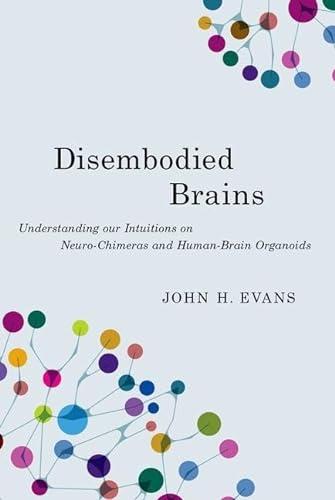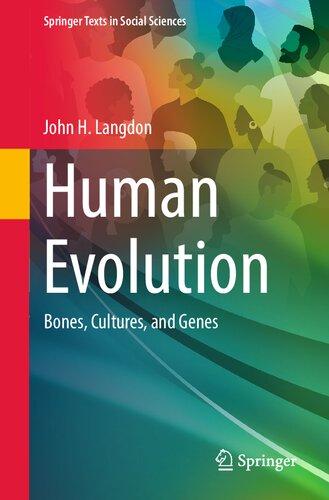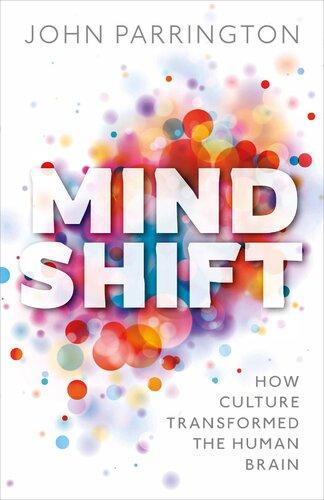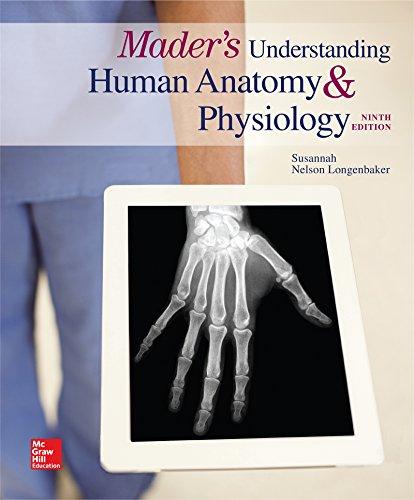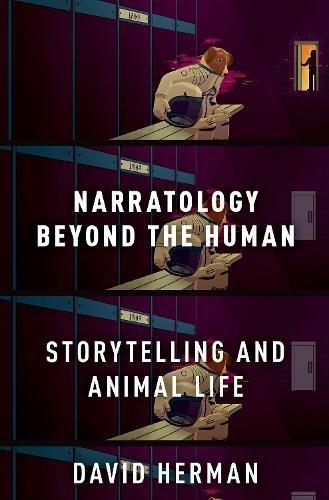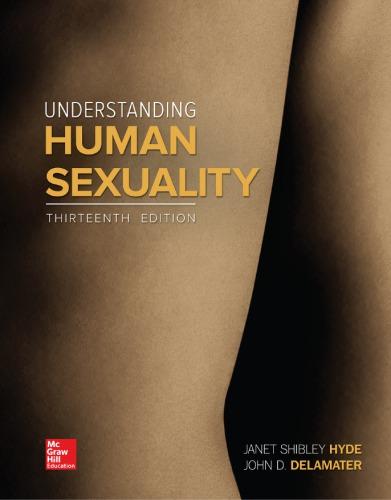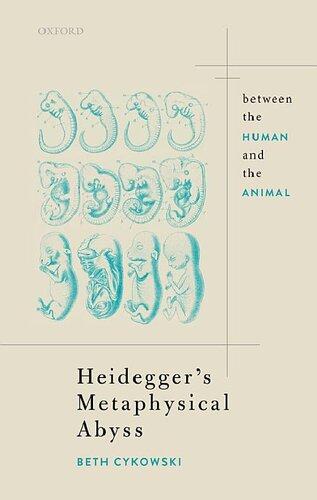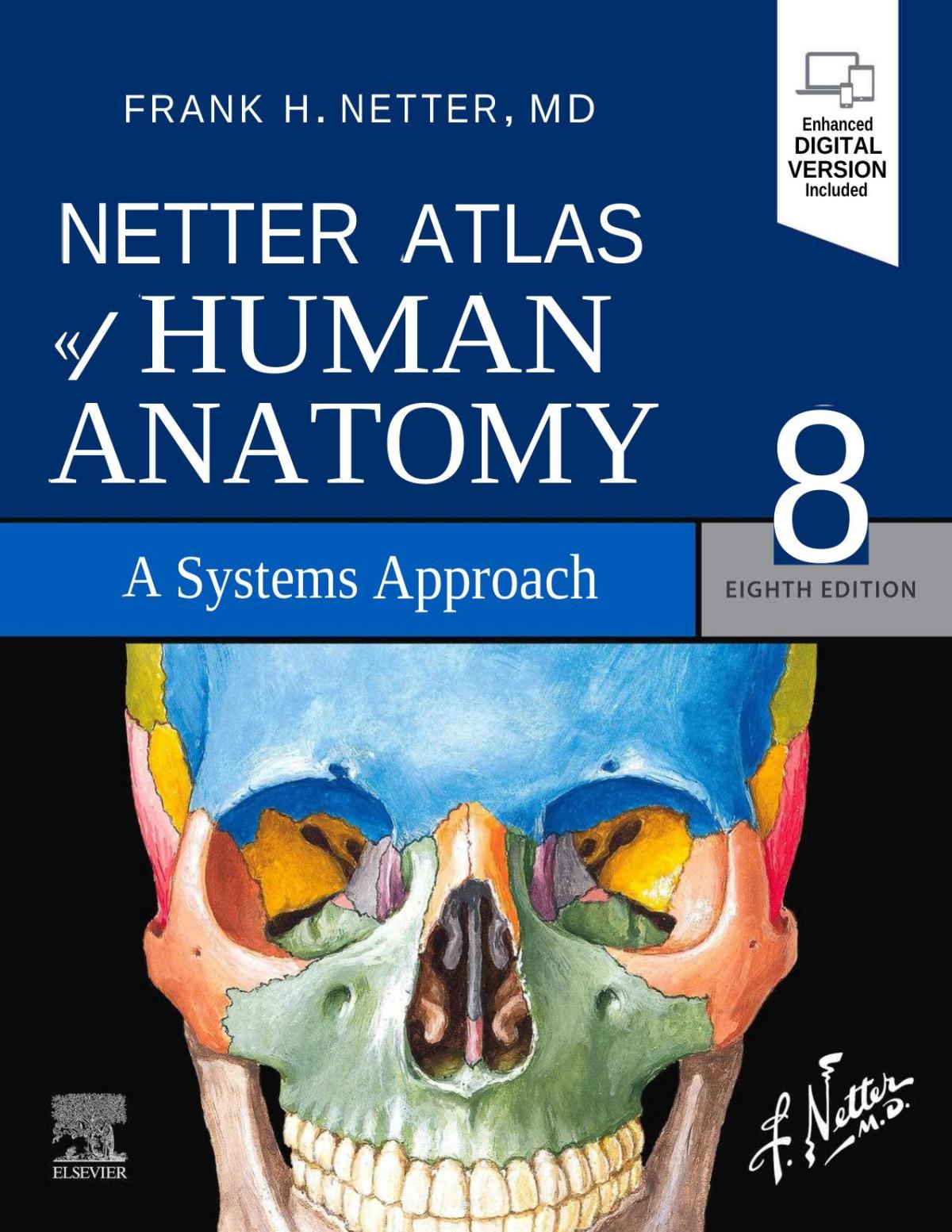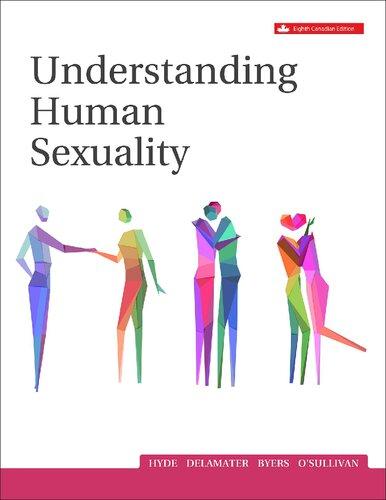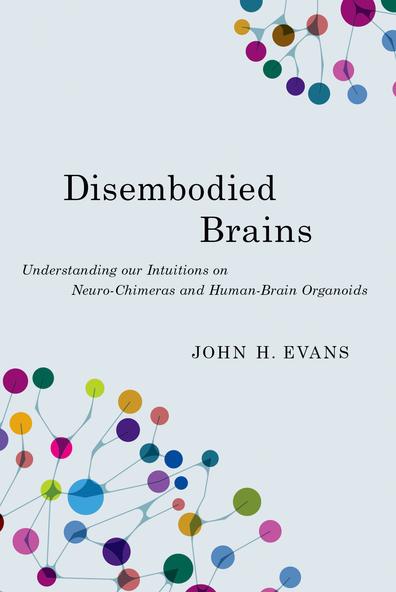1 The Science and Public Ethics of Neuro-Chimeric Animals and Human-Brain Organoids
In one of the most successful films of 1968, moviegoers saw Charlton Heston star as an astronaut who travels to a strange planet,1 where he encounters a species of intelligent talking apes who dominate the mute and primitive humans who share the planet. Surely this movie was popular at least partly because of the acting and the story, but Planet of the Apes was also, in its time, the latest example of our society’s fascination with animals having human qualities, which I will call human-animal chimeras. This fascination has been with us for thousands of years.
The term chimera comes from ancient mythology and refers to the mixing of any two or more diverse animals. The original mythological chimera was a mix of lion, bird, and snake. But the category of chimera in mythology also includes human-animal mixes such as sphinxes (half human, half lion), centaurs (half human, half horse), satyrs (half human, half goat), minotaurs (half human, half bull), and sirens (half human, half sea monster).2
Contemporary culture has produced an enormous number of an even more specific type of chimera—that is, an animal who thinks and acts like a human, like those on Planet of the Apes. If the movie’s apes had had human stomachs nobody would have cared, but neuro-chimeras (NCs) mix in the human brain, which is considered by many to be what makes us human.
Disembodied Brains. John H. Evans, Oxford University Press. © Oxford University Press 2024. DOI: 10.1093/oso/9780197750704.003.0001
In popular culture, NCs are not necessarily evil. An older generation will remember the 1960s TV show about the talking horse Mr. Ed, whose speech could only be heard by his human friend Wilbur. And cartoons are filled with animals that act like humans: Mickey Mouse, Daffy Duck, Bugs Bunny, Stuart Little, and many more.
The fascination with the Planet of the Apes is just the latest installment of a long story. If that movie had concerned standard apes, it would obviously not have had the same sensational impact. Chimeras, by contrast, have cultural power and provoke fascination. In Robert Klitzman’s summary: “the long history of such images across multiple, disparate cultures suggests how humans have long seen the boundaries between species as fluid, but in differing ways, as either good or bad—as gods or monsters—in both cases as special and possessing power.”3
I am usually loath to use the term “impossible” when it comes to scientific developments, but an animal body that thinks and speaks exactly like a human, such as Mr. Ed or Bugs Bunny, will probably always be impossible. These fictional entities would need a human brain, and we are only one tiny step down the path to Mr. Ed.
In this book one of my foci will be human-animal NCs, which are animals with some human brain tissue. While we do not know how Mr. Ed came into being, presumably he is an NC, because he thinks and speaks like a human, albeit trapped in a horse body that limits his human-like abilities. While Mr. Ed was fascinating and entertaining, an actual Mr. Ed would be unsettling and intensely controversial.
Let me turn to another trope from popular culture: the brain in the vat. The poster for the 1962 B-movie The Brain That Wouldn’t Die shows a woman’s head and a brain in a large vat, with wires running between the head and the vessel, and the words “Alive . . . Without a body . . . Fed by an unspeakable horror from hell!”4 In the more contemporary movie The Matrix, computers have enslaved human bodies, having plugged their brains into a simulation where these brains all think that they are having normal human lives even as
they actually remain immobile in a vat.5 While the brain in the vat, unlike the chimeras, has not been a source of centuries-long fascination, it reflects a host of longtime cultural distinctions, such as the mind-body problem, the limitations of human perception, and the horror of perceiving social life without being able to engage in it.
There are reasons why the talking apes and the brain in the vat sell movie tickets. They touch on the deepest questions of human existence, and their stories allow us to work out these deep questions without completing a PhD in the philosophy of mind. But they also permit the viewer to walk out of the theater without a sense of looming disaster, because they are just stories, right?
Is the Fictional Becoming Real?
What happens when human-animal NCs and disembodied brains in a vat stop being quite so fictional? We have been on the path of nonneural chimeras for centuries, depending on which historical claims you believe and what you include in that category. For example, taking a part of an animal and putting it in a human, or xenotransplantation, results in a type of human-animal mix. It has been claimed that a bone from a dog was put into a human in 1501, producing the first known (non-neural) human-animal chimera. In 1667 a man was infused with lamb’s blood. In the following centuries doctors would continue to attempt similar feats, without much success.6
To turn to the modern era, in the early 1960s various Americans experimentally received organs from baboons and rhesus monkeys, though even the most successful transplants resulted in patients surviving only a few months. In 1984 a highly publicized transplant of a baboon heart into a baby named Fae failed; according to one historical summary, “Most of the hopes put on xenotransplantation died with Baby Fae.”7
Nevertheless, the invention of better immunosuppressive drugs, and the creation of genetically modified animals whose organs are more compatible with humans, led to further attempts. In 1992 the first transgenic pig, with genetically engineered DNA, was born, and the success would lead to the widespread use of pig organs in humans.8 Today, implanting heart valves from both pigs and cows is standard medical practice, and scientists continue working on genetically modifying pigs to make their organs more compatible with humans.9 Other nonneural chimeras include rodents whose immune systems have been altered to more closely resemble the human immune system.10
Since blood, livers, and the immune system do not raise foundational questions about humanity, I will put these human-animal combinations aside for the rest of this book. Our concern here will instead be the brain. In modern times it is the brain that is seen as the core of what makes us different from other life-forms and the seat of the self. With brain death as the legal standard for being dead, the brain is also how we decide which human bodies live or die.
We should naturally ask why scientists are doing this research. Over the past few hundred years, the scientific motive has largely been to save lives by replacing dysfunctional human parts with functional animal parts. But the new research on NCs and brains in a vat has a slightly different motivation, which is to create experimental animal models for studying human neurological disease.
Since we cannot experiment on actual live human brains because they are residing in live humans, alternative experimental models are needed. The brains of lab mice are quite different from those of humans, so these experiments do not tell us as much about human neurological disease as we would like. There is an inherent tension in employing such human-brain substitutes: the more they resemble human brains, the more useful they are for human research, but also the more ethical issues are raised.
Development of Human-Brain Organoids
To better understand these new technologies, let us start with the brain in the vat: that is, a human brain organoid, or HBO. An HBO is a three-dimensional aggregation of human neural cells grown from pluripotent stem cells. A stem cell is a cell that makes other cells, and a pluripotent stem cell can be used to make a range of specific cell types.
Scientists have successfully grown cells that make up one small part of a brain (not an entire brain) to produce a clump of tissue about 4 mm across that can be kept alive in a dish. And researchers can now take HBOs of different parts of the brain and coax them into fusing to become “assembloids.” Importantly, these entities are kept in a petri dish except when they are placed in an animal brain (see below). The concern of ethicists and scientists about HBOs in a dish is that they could achieve a modicum of consciousness (about which much more below). Philosophers would say that an entity cannot have higher-level consciousness without experiences; thus, with no way of interacting with the world, HBOs will remain lumps of tissue.11 However, HBOs representing tissue from different parts of the human brain have recently been connected, and, in a 2017 article, scientists reporting an experiment on HBOs with retinal cells found that a burst of electrical activity followed from shining light on the HBOs.12 Scientists have also had success in growing optic components of the brain.13 In 2019, researchers found that the electroencephalogram activity of an HBO resembles the activity seen in 25- to 39-week-old premature infants.14 This all has researchers wondering whether HBOs might be more capable of acquiring abilities than previously assumed.
One of the primary HBO researchers has created a small spiderlike robot whose movement is stimulated by the electrical activity of the HBO, and he recently announced that he is working on “closing the loop” so that the perceptions of the robot will be fed back to the HBO. Another scientist, working in conjunction with
Microsoft Corporation to improve machine learning, has said he is pursuing the problem of connecting the “wetware” of the HBO to the “hardware” of a computer to make a more efficient computer.15 Perhaps it is not too far-fetched to predict that within ten years an HBO in a dish could be having rudimentary experiences.
This research has received a lot of media attention, partly because there had not previously been any research like it. Of course, scientists have been growing human tissue from stem cells for quite some time, and the HBO techniques have built on that research. But culturally the brain is something altogether different from a liver or even a heart. The headlines suggest the potential explosiveness of the continuing experimental progress. A headline from Scientific American, “Lab-Grown ‘Mini-Brains’ Can Now Mimic the Neural Activity of a Preterm Infant,”16 evokes the image of a baby trapped in a petri dish. So we can see why attention has been focused on HBOs.
Development of Human-Animal Neuro-Chimeras
Scientists’ ability to create human-animal NCs has recently increased markedly. The first technology that implied the possibility of a NC was “human-to-animal embryonic chimeras,” produced by putting human neural stem cells into the brain of a developing monkey and putting human genetic material into rabbit eggs.17 A 2005 report of the National Research Council and the Institute of Medicine urged restraint on developing these and similar NCs, stating that “perhaps no organ that could be exposed to [human embryonic stem cells] raises more sensitive questions than the animal brain, whose biochemistry or architecture might be affected by the presence of human cells.”18
Scientists have since implanted human glial cells into mice, who then—not to get too ahead of myself—performed better on
learning tests.19 In 2018 HBOs were first implanted into the brains of adult mice to create a NC, combining the two technologies under examination in this book.20 In an experiment reported in the fall of 2022, scientists made striking progress in both HBO and NC research by implanting HBOs in the brains of two- to three-dayold rats.21 While HBOs in a dish are not vascularized, and thus the middle of the HBO cannot receive oxygen and nutrients, limiting its growth, an HBO in a rat becomes part of the rat’s circulatory system and thus can grow larger. In the 2022 experiment, each cell in the organoid grew six times longer than it would have grown in a dish, and the cells became about as active as neurons in human brains.22 This seemed to solve the problem that HBOs in a dish would always be small and limited, in that the rat could become the vat that allowed the HBO to grow to a more human level. Another problem with the HBO in the dish is that brain neurons develop with experiences, and it is hard to have experiences in a dish—but as the rat has experiences, its HBO becomes more developed and human-like.
What the experiment showed about brain integration, and thus about the development of NCs, is even more morally relevant than what it showed about HBOs. The experiment suggested a true mix of human and rat brain, instead of an HBO simply residing, unintegrated, in the vat of the rat brain. When implanted, the HBOs spontaneously wired themselves with even distant parts of the rat brain. The human component also reacted to stimulation of the rat’s whiskers, and even directed rat behavior, with the organoids “apparently sending messages to the reward-seeking regions of the rats’ brains.” Unlike in the earlier experiments, however, these rats did not become any smarter.23
The New York Times report of the research quotes a scientist assuring us that the rats are still rats and are not human. But, the writer notes, “that might not hold true if scientists were to put human organoids in a close relative of humans like a monkey or a chimpanzee.” The author of the study pointed out to the reporter
that the similarity between primates and humans might allow the organoids to grow larger and take on a larger role in the animal’s mental processes, but added that “it’s not something that we would do, or would encourage doing.”24 But while this particular researcher would not do such research, we can be confident that the ability to make a monkey brain more like a human one will attract other researchers trying to relieve the suffering from human brain diseases.
A second method of creating an NC occurs much earlier in the life of the animal: putting human embryonic stem cells into animal blastocysts (advanced-stage embryos), resulting in an animal with some human cells. While this has not yet been done with brain cells, recent research has made such experiments more possible.25 For example, by means of a technique called blastocyst complementation, a pig blastocyst could be modified to open a developmental niche that would otherwise have developed into a pig pancreas. Human stem cells could be placed into that niche, and the resulting pancreas in the pig would be like a human pancreas.26
In 2018 researchers first conducted neural blastocyst complementation, taking the developmental niche that would have developed a mouse brain and replacing it with stem cells from another type of mouse.27 This opens the door for future experiments in which a mouse could develop with human brain tissue.
Scientists have begun research on nonhuman primate NCs using monkeys. This research is motivated by the familiar problem with using rodents for human research, which is that rodents diverged from humans in evolution so many millions of years ago that we humans are really not like lab rats, particularly in our brains.28 This frustration is exemplified by the common quip by scientists that it is a great time to be a mouse with Alzheimer’s, since so many drugs have been shown to be efficacious on Alzheimer’s in mice even though they do not end up working in humans. By contrast, nonhuman primates have not only greater genetic similarity to humans
but also more similar skull size and gestation time than other mammals, and their bodily form also means that they could have more humanlike experiences.
In 2021 scientists in China announced that they had successfully added human cells to monkey blastocysts and that these human cells had survived far into development.29 Though these were not specifically neural cells, this research produced the proof of concept that it is possible to create monkey-human chimeras by merging cells in a blastocyst.
A third method of creating an NC is engineering a human-animal transgenic hybrid through genetic modification. For decades researchers have been producing “humanized mice,” mice genetically modified to have human qualities.30 Even NCs have been created, such as mice genetically engineered to have Alzheimer’s disease and monkeys with human autism.31 In 2019 scientists put a human gene that is thought to affect intelligence into a monkey genome, and the altered monkeys were reported to be smarter than comparable unaltered monkeys.32 Scientists are pressing forward with developing transgenic hybrid nonhuman primate models for human neurological disease.33
These experiments have been deeply controversial. Again, a few headlines will make the point. “Chinese Scientists Have Put Human Brain Genes in Monkeys—and Yes, They May Be Smarter” was the title of an article in one science magazine.34 “The Smart Mouse with the Half-Human Brain” was a headline in The New Scientist.35
To make my point about how controversial these technologies will be, I would request that you describe HBOs and NCs to someone in your home and ask what they think about them. I predict you will hear expressions of both shock and disgust that such research exists (of which more below). We can expect this research to become increasingly controversial as the public finds out more about it.
From this point forward I will not focus on the details of how NCs and HBOs are created, because the exact method lacks moral
valence. The central question at this point is: Should this research continue? The answer will depend upon our ethics.
What Should We Do?
Whose ethics get to shape public policy regarding biomedical technology? Before roughly the 1960s in the United States, the answer would have been simple: scientists’ ethics. But since the 1960s the answer has changed, and it is now, at least officially: the public’s ethics. The reader will then ask how—in a morally and religiously pluralistic society, where even summarizing the ethics of all the citizens would be extremely difficult—it is possible to allow the public’s ethics to decide such policy, even assuming that the regular public had the time to stay up to date on these technologies.
In order to determine the public’s ethical stance, the tradition has been to use a group of experts who ostensibly represent the public’s views to mediate between the public and policy makers. At present, elected officials and the officials they appoint ultimately make policy decisions on these issues; however, critically, the ethical choices considered to be legitimate are filtered, discarded, or promoted by the experts before policy makers rule on an issue. This filtering of possible legitimate ethical stances very powerfully influences what policy is made, and ultimately what technologies are pursued. In the United States, this structuring occurs in “publicpolicy bioethical debate”—that is, the debate about the ethics of the technology engaged in among elite experts, essentially all of whom have doctoral degrees, making recommendations about what an ethical policy should be. Such debate occurs largely in specially created commissions, conferences, and academic publications.36
When the public-policy bioethical debate began in the 1960s and 1970s, a broader range of elites was involved. Of those previously involved, those currently absent include, most notably, the pluralistic theologians, who spoke a secular language in public and were
focused on the deeper implications of technologies. Today the debate is instead dominated by scientists and bioethicists.
The profession of bioethics is like philosophy in that it makes normative claims, but it is distinct from philosophy in the types of arguments it makes.37 A typical debate occurs when a new and controversial technology arrives on the scene, and a group of scientists and bioethicists (with scattered others) is convened to ascertain what the ethical policy should be. They start with the public-policy bioethical debate, which is published in academic journals. They write reports, which scientific agencies use to set policy and practicing scientists generally follow voluntarily. On the topics of HBOs and NCs, there have been National Institutes of Health committees, committees of scientific associations, and committees of the National Academies of Sciences, Engineering, and Medicine.38
The scientists and the bioethicists generally agree on the values and goals that should drive the ethics of technologies. To understand the ethical policies about HBOs and NCs that have already been recommended—and to some extent enacted—we must understand the values advanced by both groups in these debates.
Before making a statement about these two groups, I need to say that this book is based in sociology, which means that it will be making generalizations. When a sociologist says that “people in Alabama are more conservative than people in California,” he or she simply means that on average Alabamans are more conservative than Californians. Similarly, when a sociologist refers to the opinion of “scientists,” he or she means the average or dominant scientists. No group is monolithic.
That said, the bioethicists and scientists advocate for the use of only a few purportedly universal goals or values: autonomy (freedom), beneficence (doing good), non-maleficence (avoiding harm), and justice (equal treatment).39 To oversimplify: If a technology does not harm but helps, if people are free to use or not use it, and if it is equally available to all—then it is morally acceptable.
In contrast, scholars who do not participate in the public-policy bioethical debate are often using other values. The bioethical debate about HBOs and NCs that is currently engaged in for guiding policy is focused only on the value of non-maleficence. Beneficence is assumed to be advanced in medical research, while justice and autonomy are only relevant for persons as opposed to animals. The question in the present debate is: Is HBO technology harmful for the HBO, and is the inclusion of human tissue in an animal harmful for the NC?
I do not think bioethicists and scientists are being nefarious in limiting the values under consideration. In many cases, this limited set of values comprises the only ones that these experts truly believe in. In other cases, the experts believe that, in a liberal democratic society, only nearly consensual imperatives such as “Don’t harm people” can be imposed. My point is that these are actually not the only values important to the public.
Public Input to the Public-Policy Bioethical Debate
From the end of the twentieth century, the academic experts in the public-policy bioethical debate have recognized that they have a legitimacy problem. On what grounds should this unusual group of citizens—all of whom have PhDs—get to structure government policy? They are not elected, and they are not representative of the general public. There has been a slowly growing recognition that, since the debate provides input to public policy, it should therefore promote not simply the values of scientists and bioethicists but more broadly the values of the public. This is not simply for general democratic reasons but also because most of this research is paid for by the public.
In recognition of this problem, bioethicists and scientists now regularly call for the input of the public’s ethics into policy
deliberation through public-engagement exercises. Each of the aforementioned bioethics reports has a passage at the end calling for such engagement. However, such exercises do not actually influence policy, since they lack “teeth.” According to one interpretation from prominent science-communication scholars, they simply give the appearance that the public’s values are being followed.40 Moreover, despite the ubiquitous call for such public-engagement exercises, they never seem to happen, leaving the expert ethics of the bioethicists and scientists to continue setting the agenda. I have elsewhere proposed a solution to this problem, which is that the values of the public should serve as the raw material from which bioethicists can derive more detailed ethical recommendations.41 The values of the public on a particular issue would be described by social science. It is in that spirit that this book will proceed, contrasting the public’s views with those of the bioethicists and scientists who dominate the public-policy bioethical debate.
Defining the Human
To understand the difference between the public’s ethics regarding HBOs and NCs and those of the bioethicists and scientists, we have to briefly delve into an admittedly abstract concept that is almost never explicitly discussed in these debates. This concept is the definition of the human, and we have to explicitly raise it because the public-policy bioethical debate presumes that the definition used by bioethicists and scientists is an undebatable fact. HBOs and NCs are controversial because of their connection to actual humans, so it should not surprise us that one’s perspective on these technologies is dependent on what a human actually is. The “avoiding harm” value that is most prominent in the debate applies centrally to humans (and, to a lesser extent, to animals with more human-like capacities).
Among academics in the Western intellectual tradition, there are three prominent definitions of the human, also called “anthropologies”: the theological, the philosophical, and the biological.42 These definitions can be based on the physical form of the human, the moral status of the physical form, or both, and they typically contrast humans with other animals.
Theological Anthropology
Among the various theological anthropologies, I focus on the Christian anthropology, because Christian beliefs, unlike those of other religions, have historically influenced the public culture and law in the United States, even for nonreligious people. (Due to Christianity’s emergence from Judaism, the Christian anthropology is very similar to the Jewish version.) Christianity is also by far the largest religious tradition in the United States, and, as I will describe below, it is likely the source of the greatest variation in the public’s views. More pragmatically, when I later turn to obtaining the views of the public, it will be evident that non-Christian U.S. religious groups are too small to make claims about using the methods employed in this book.
For the Christian theological anthropology, the central idea is that humans are defined by being made in the image of God. The account of human origins in the book of Genesis (1:26-28) reads: “Then God said, ‘Let us make man in our image, after our likeness; and let them have dominion over the fish of the sea, and over the birds of the air, and over the cattle, and over all the earth, and over every creeping thing that creeps upon the earth.’ So God created man in his own image, in the image of God he created him; male and female he created them” (Revised Standard Version). Note that this critical biblical passage not only gives the definition of a human but also more broadly includes a description of the human relationship to animals and nature, which I will discuss below.
There are undoubtedly many thousands of pages of academic theological texts devoted to what exactly the image of God is, but it is not the case that a Christian theologian identifies physical humans by using a checklist of attributes of God. Rather, to identify a physical “human,” the Christian anthropology relies upon the pre-DNA biological definition of a human, in which humans are those born from other humans (of which more below). In the very traditional version, humans are the descendants of Adam and Eve, the first two humans.
The first component of this anthropology is that humans are not limited to physical form, but also have a “soul.” When creating each human, one by one, God gives them each a soul. This soul is, for the academic theologians, essentially communicative—it is how a human relates to other humans and to the divine.43 Traditionally, this soul can separate from the body and will travel to heaven (or hell) after death. Thus, humans are not just material; they are also spiritual beings. This is the one anthropology that is not materialist, maintaining that there are true features of the world beyond atoms, electricity, and other phenomena that can ultimately be explained with physics.
This anthropology defines not only physical form but moral status as well. First, physical humans are not animals, which were created separately by God, with humans as their stewards. This anthropology has traditionally emphasized that humans are special compared to other animals, as it is only humans who are made in God’s image and only humans who communicate with God. In this view, each human is individually ensouled by God, often described as occurring at fertilization.
Of course, perspectives on the moral status of humans compared to animals are not uniform. Protestants typically make a categorical distinction between human and nonhuman animals. One evangelical scholar writes that “Evangelicalism is influenced by long held Christian and social traditions which emphasize a categorical distinction between humans and animals: imago dei that sets humanity
apart from the rest of creation; whereby humans are given dispensation to use animals under God.” Many Conservative Jewish scholars agree, with one scholar writing that there is “admiration for each of the various species God has made, with no hierarchy of value among them—except for humans, who are, according to Genesis (1:27; 5:1; 9:6), uniquely created in the image of God. This special status permits us to use animals for our purposes.”44
Catholicism is a bit more ambiguous, as exemplified by St. Francis of Assisi and the blessing of the animals that is widely conducted in Catholic churches today. Many contemporary Catholic theologians want to at least lessen the distinction between human and nonhuman animals by saying that both bear the image of God. In this account, humans and animals are still distinct, but animals are not solely for human use. Nonhuman animals were created by God (on the same day, in the Genesis account), and each animal has its own telos that must be respected. As two theologians write: “God created animals “good,” period, to flourish in their own right as the good kinds of things that they are.”45 We then cannot think of animals as tools for human use.
The second moral status component of this anthropology is between humans. To return to the Christian consensus: since each human was created individually by God, and communicates with God, all humans have equal value—an ethic that adherents of this anthropology have obviously not always upheld. It then emphasizes that being made in the Image—and thus being human—is not dependent upon any capacities of the human. One classic explanation is that humans have “alien dignity,” because their dignity does not come from any capacity they possess but rather from God.46 This explains the tendency for Christians to less readily accept that biologically human entities that lack certain capacities, like fetuses or the comatose, can be destroyed.
The theological anthropology is then both biological (a definition of the physical difference between humans and animals) and moral: all humans are to be treated as equals without
regard to capacities and are in a superior position to all animals. This definition of the human, while more abstract than the other anthropologies, has had enormous influence in the West, such as being the origin of secular human rights,47 and is widely held by Americans.48
Philosophical Anthropology
The philosophical anthropology ignores the physical form of the entity and the distinction between humans and animals while focusing on moral status. It does not talk about the human, but about persons. According to Peter Singer, its best-known proponent, “the concept of a person is distinct from that of a member of the species Homo sapiens, and . . . it is personhood, not species membership, that is most significant in determining when it is wrong to end a life.”49
Personhood is the moral status an entity reaches if it has enough valued capacities. There is rough agreement about at least the most basic capacities required for personhood. In one list of 17 capacities, highlights include “possesses consciousness,” “can experience pleasure and pain,” “has thoughts,” “has preferences,” “is capable of rational deliberation,” and “has a sense of time.”50 For Peter Singer, personhood requires being, “at minimum, a being with some level of self-awareness.”51
Using this anthropology, human fetuses and those in permanent vegetative states are not persons because they lack important capacities, and there is thus no prohibition on ending their lives. Chimpanzees and some other nonhuman animals, on the other hand, are often thought to have the capacities required for personhood and therefore should be treated accordingly.
The philosophical anthropology is interwoven with a wide range of bioethical policies. For example, a living will contains a list of capacities in whose absence the person does not want to
be kept alive. All regulations concerning the treatment of animals are loosely based on this anthropology, within which, for example, you can do anything you want to ants, which have no valued capacities, but cannot experiment on chimpanzees, who have many of the valued capacities. The critical question is how many valued capacities a life-form has.
Biological Anthropology
The biological anthropology is resolutely materialist, with no conception of soul or spirit. It has classically been concerned only with physical form—with distinguishing the human species from other animals. Ernst Mayr’s classic “biological species concept” holds that a species is defined by reproductive isolation: if two entities cannot breed, they are from separate species. If we start with those who are consensually considered humans, then any entity that can breed with those people would also be human. Since chimps cannot breed with humans, they are not human. A related classic definition, the “evolutionary species concept,” emphasizes continuity: “a species is a single lineage of ancestral descendant populations of organisms which maintains its identity from other such lineages, and which has its own evolutionary tendencies and historical fate.”52 That is, humans are those born from humans, which is akin to the biological components of the theological anthropology.
However, these anthropologies are no longer dominant among biologists. As Jason Scott Robert and Françoise Baylis write, “As against what was once commonly presumed, there would appear to be no such thing as fixed species identities” for biologists. PostDNA biology has emphasized the evolutionary idea that humans are not distinct but are on the same continuum with other animals. One critic has assembled statements from influential biologists to this effect: “Humans are more like worms than we ever imagined,” “The worm represents a very simple human,” “In essence, we are
nothing but a big fly,” “We share 99 percent of our genes with mice, and we even have the genes that could make a tail,” “We humans appear as only slightly remodeled chimpanzee-like apes,” and so on.53
While in principle the biological anthropology makes no moral status claims, and it is part of the ideology of science to be morally neutral, the species-continuum view of physical form coincides nearly perfectly with the philosophical anthropology. The ranking of capacities that are critical to the philosophical anthropology map onto evolutionary differences, and therefore the evolutionary continuum (microbes to insects to mammals to humans) very closely coincides with the valued-capacities continuum. It is the biological forms of life most evolutionarily distant from humans that have the least-valued capacities, and those evolutionarily closest (chimpanzees) that have the most-valued capacities.
Becoming Human through Capacities?
Armed with these definitions of the human, we can now properly describe the public-policy bioethical debate about HBOs and NCs that is dominated by bioethicists and scientists. This debate largely assumes the philosophical anthropology and is concerned with whether HBOs or NCs could obtain the requisite capacities to “become human.” Of course, no one in the mainstream debate thinks that an NC mouse or an HBO could become a physical or biological human; however, the biological distinction between species is not relevant for those using the philosophical anthropology. Since developing enough valued capacities to qualify for full personhood— to be morally treated like other humans—is unlikely, another question becomes whether the entity has enough valued traits to be treated like we treat more advanced animals.
The base capacity discussed in this debate is “consciousness” or “sentience,” as well as the related concept of “cognitive ability.”54 Henry Greely is the most prominent bioethicist examining NCs
and HBOs, and his work reflects the anthropological assumptions among bioethicists in the bioethical debate. Greely is concerned with the “humanization” of NCs, and he defines humanization as having “some human cognitive abilities”—a topic he marks as the most significant part of the debate.55 Greely similarly writes of HBOs: “If it looks like a human brain and acts like a human brain, at what point do we have to treat it like a human brain—or a human being?”56 In other anthropologies, by contrast (as I will discuss below), a disembodied brain would never be considered a human being.
A section of another paper from Greely is titled “Conferring Humanity on Mice,” which suggests that mice could obtain human moral status. Greely and his colleagues set the standard for whether you could “transform a mouse into a man” by whether it was “a creature with some aspects of human consciousness or some distinctively human cognitive abilities.”57 This anthropology is not only used by Greely. H. Isaac Chen and colleagues write that “One of the primary concerns centers on the possibility that animals transplanted with human brain organoids would become more ‘human.’ ” Their ethical concerns about HBOs are due to HBOs’ being “increasingly similar to the human brain, the source of the higher-order cognitive capacities that are most often equated with being human.”58
The assumption that consciousness is the primary moral consideration is also evident in the work of the bioethics commissions dedicated to this topic. The National Academies Committee assigned to study HBOs and NCs was given a list of questions to answer. The first question on the list was “How would researchers define or identify enhanced or human awareness in a chimeric animal?” The second was “Do research animals with enhanced capabilities require different treatment compared to typical animal models?” The fifth was “How large or complex would the ex vivo brain organoids need to be to attain enhanced or human awareness?” The ethical
concerns of the public, which I describe below, are not mentioned as topics to be considered.59
Media stories also tend to take this perspective and use the philosophical anthropology to compare the capacities of HBOs and NCs with those of born humans, partly because they rely on bioethicists as their experts. For example, the New York Times article reporting on the discovery that brain waves in HBOs resemble those of premature babies is centrally concerned with whether this means that the two entities are effectively the same. In the article, the scientist whose lab made the discovery stated his concern that HBOs could become “conscious,” and neuroscientist Christof Koch worried about a “brain that is capable of sentience and of feeling pain, agony and distress.”60
Similarly, in a news article describing the NC mice that resulted from the insertion of HBOs in their brains, Greely identified a capacity that mice will not achieve, and then states that the important question is “whether you are creating something human-ish that you have to take seriously in terms of according it dignity and respect—and figuring out what that even means.” The term “human-ish” obviously puts a born human and the HBO on the same spectrum of capacities.
Another ethicist quoted in the article asks, “if we give [NCs] human cerebral organoids, what does that do to their intelligence, their level of consciousness, even their species identity?” The journalist describes the problem of NCs as the possibility that “the animals might become too human” due to the human brain components.61 Finally, a Guardian article says that HBOs could “gain consciousness, feel pleasure, pain and distress, and deserve rights of their own.” Since only humans have rights at present, this too emphasizes that the HBOs could “become human.” Greely states that, with enough complexity, “we potentially edge towards the ethical problems of human experimentation,” which assumes that HBOs could obtain the protected status of humans in research.62
